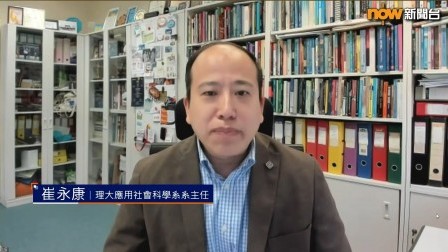Revolutionising future electronics with ultrathin all-organic perovskites
Other Articles
Imagine a material 20,000 times thinner than a human hair, yet possessing such immense power that it has the potential to revolutionise the way we construct electronic devices. This groundbreaking material, known as the “two-dimensional all-organic perovskites”, has been developed by a team of PolyU researchers, paving the way for the creation of more versatile and cutting-edge electronic systems.
Perovskites: A transformative journey towards all-organic compounds
Perovskites, well-known for their fascinating properties, can be applied in diverse fields such as solar cells, lighting, and catalysis. Their ability to be finely tuned enables the development of high-performance materials. While perovskite was first discovered as an inorganic compound, a PolyU research team has embarked on a transformative journey to unlock the untapped potential of all-organic perovskites.
The research team was led by Professor Loh Kian-ping, Chair Professor of Materials Physics and Chemistry and Global STEM Professor of the Department of Applied Physics of PolyU, Dr Kathy Leng, Assistant Professor of the same department, and Dr Hwa Seob Choi, Postdoctoral Research Fellow and the first author of the research paper of this project.
The potential of all-organic perovskites is immense, offering distinct advantages over their all-inorganic counterparts. Their solution-processible and flexible nature enables cost-effective fabrication. Professor Loh’s team has adopted an innovative approach by synthesising all-organic perovskites in the form of 2D layers instead of 3D crystals. This innovative approach effectively resolves a long-standing challenge in the synthesis process faced by other researchers, leading to the development of the “Choi-Loh-v phase” (CL-v) perovskites, named after researchers Dr Choi and Professor Loh.
The Potential of CL-v Perovskite in 2D electronic devices
The CL-v perovskite is a molecularly thin 2D organic perovskite that can be incorporated as a dielectric layer in 2D electronic devices. It is proven that its capabilities to surpass those of conventional silicon oxide dielectric layers, making it an ideal candidate for use in 2D electronic devices, particularly those requiring thin layers with high dielectric constants.
The team’s research not only establishes an entirely new class of all-organic perovskites, but also demonstrates how they can be solution-processed in conjunction with advanced fabrication techniques to enhance the performance of 2D electronic devices. These advancements unlock a new world of possibilities for the creation of more efficient and versatile electronic systems in the future.
This research, titled “Molecularly thin, two-dimensional all-organic perovskites”, was published in the prestigious journal Science, solidifying its importance and contribution to the scientific community.






